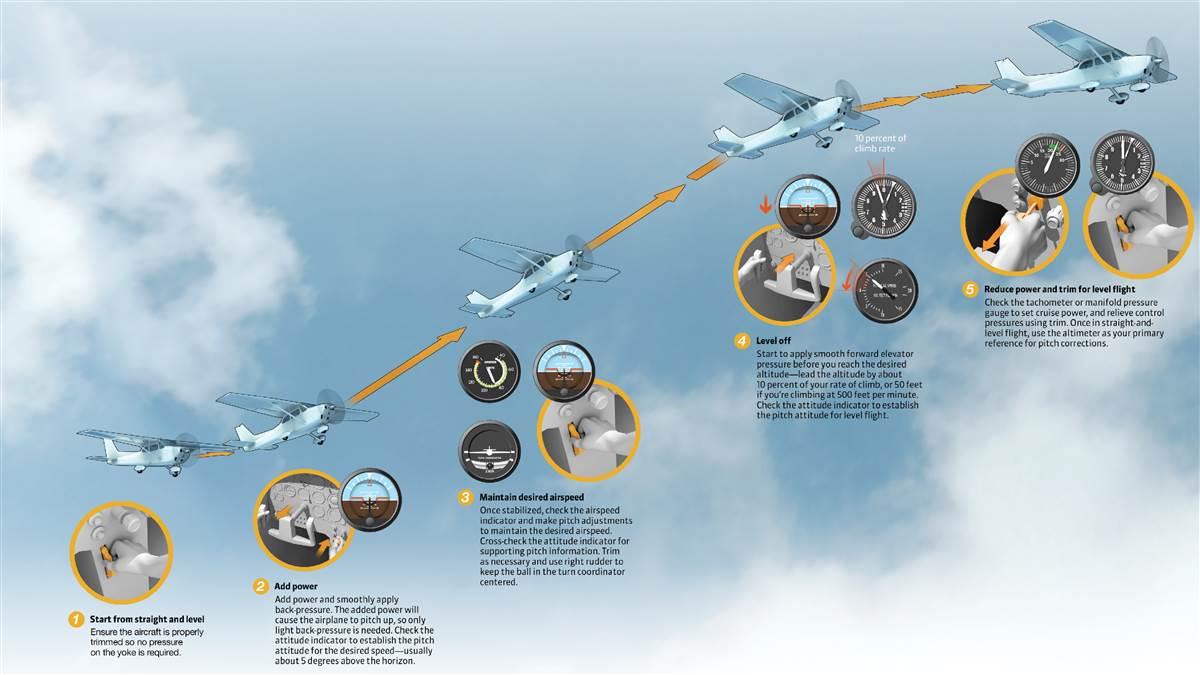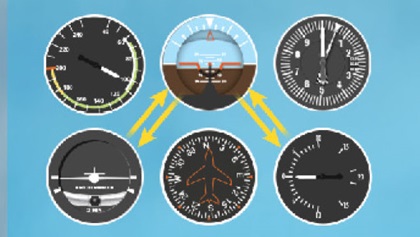Technique: Constant-airspeed climbs
Check and cross-check for this fundamental instrument maneuver
In VFR flying, instruments are secondary. They confirm and explain what you see, hear, and feel while looking mostly outside. Lose that outside reference, and the instruments—and, hence, an effective instrument scan—become indispensable. Basic attitude instrument flying involves learning to interpret and cross-check instruments, and to respond with the correct control inputs. The same principles apply whether you’re flying straight and level or entering a constant-airspeed climb.
The attitude indicator is central in both the “six-pack” of analog instruments and digital displays because it replaces your critical outside reference. Start here whenever you make any attitude changes. When you’re established in steady-state flight—whether it’s straight and level, climbing, or descending—another instrument becomes the go-to source for fine-tuning control inputs.
Use constant-airspeed climbs for a cruise climb or on climbout to maintain best rate of climb (VY) or best angle of climb (VX) speeds. Constant-rate climbs—where you climb at 500 fpm as you approach your assigned altitude, for instance—require a similar technique, but the vertical speed indicator becomes the primary reference for pitch once established in the climb.





